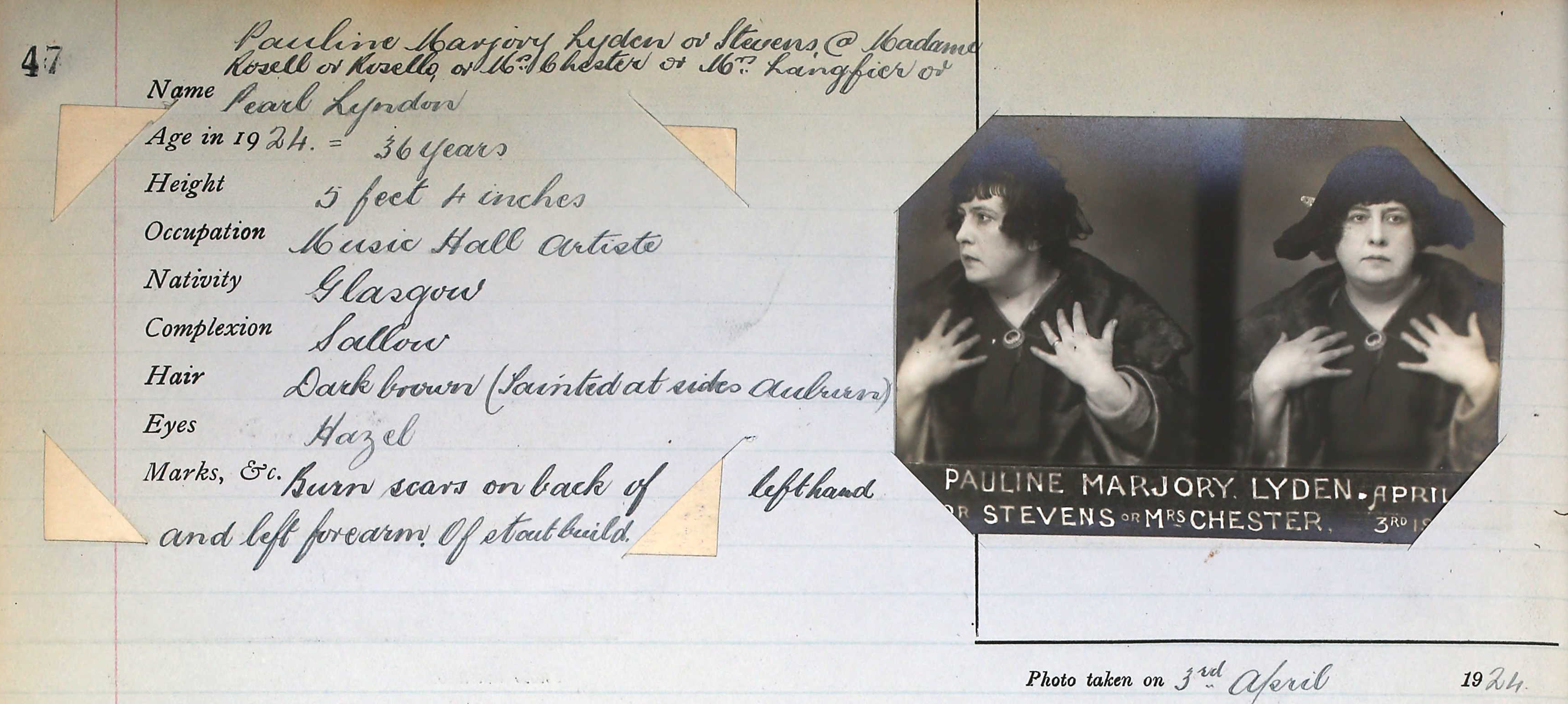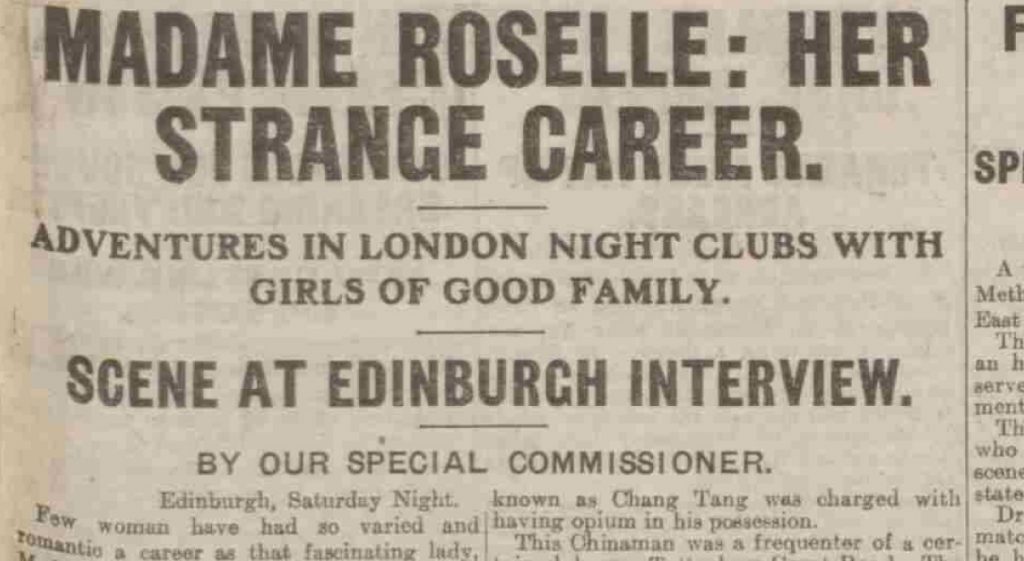
A register of criminals in Fife between 1910 and 1931 has been digitised for the first time, unearthing an archive full of misdemeanours.
Among them are Madame Roselle, also known as Pauline Marjory Lyden or Lyndon, a con artist exposed by The Sunday Post nearly a century ago.
Here’s how the Post covered her trip to court in Dunfermline in April 1924.
Few women have had so varied and romantic a career as that fascinating lady, Madame Roselle, who to-day made her first appearance in a Scottish Court.
This was at Dunfermline, where she was the centre of a remarkable conspiracy drama, and for her share in it has been sent to prison for two months.
Madame Roselle, or Mrs Chester or Pauline Marjory Lyndon, has lately been resident in Edinburgh, where she lived in good style, but from investigations I made to-day I learn that she has had an extraordinary career in London, where she was an acknowledged beauty, and leader in many exploits associated with night club life.
She first appeared in the public eye in 1911, when she was connected with the theatrical profession, and known as Pearl Lyndon. A member of the chorus of several West End productions, she lived the life of a gay butterfly.
The war giving her the opportunity she sought, she soon joined the ranks of the get-rich-quicks. In the latter part of 1915 she was before the Bow Street Magistrate on the charges of running a night club in a West End flat. This club was described as small and select, and was at first meant only for women members. When the police raided it it was said to be one of the worst dens in London.
Subsequent revelations proved that Lyndon had in her employ several girls of well-known families who, owning her gambling debts and being unable to pay in cash, were used to decoy others to the flat. A fine of £50, with costs, was imposed.
The next heard of Lyndon was about six months later, when in response to a complaint by the father of a young officer, who had been robbed, the police raided another flat in Mayfair. The circumstances were on a par with the last.
It was not until the principal offender – Madame Roselle – appeared at the police station that she was recognised as an old friend, Pearl Lyndon.
In 1915, the police discovered she was conducting no less than three different unregistered clubs in the West End. All three were raided but Madame always managed to escape until one club, which was actually held in the cellar of a large bury, was raided again.
Madame was on the premises, but she got off with a fine of £100 and £20 costs.
In January 1922, she figured in a case at Marlborough Street, when a Chinaman known as Chang Tang was charged with having opium in his possession.
This Chinaman was a frequenter of a certain club near Tottenham Court Road.
The police followed him to the club and saw him distribute to the women there about a pound of opium.
His arrest was followed by a charge against Mrs Chester of running a disorderly night club.
When Madame Roselle came to Edinburgh about a year ago, she was returning to what must have seemed like home to her, for she had previously resided there and also in Glasgow, where her husband was a well-known business man.
She had not however, abandoned her stage ambitions, for soon after her arrival in the city she applied for a place in a revue, and was engaged as a vocalist.
The management, however, did not retain her services after the first few nights of her production and madame then turned her attention to producing a revue of her own.
For this purpose she approached a local manager. At a conference with this gentleman, and other professional friends, Madame Roselle stated that she had considerable experience in the stage, and had played not only in a revue but in an important musical comedy company. The interview was not without its dramatic touches.
After expounding her views at considerable length, the lady felt she had failed to impress her auditors, and put the question straight as to why the gentleman was holding back.
“Is it the money you are afraid of?” she demanded, at the same time opening her purse and pulling out a wad of notes, which she threw dramatically on the table.
“There,” she declared, pointing to the Bradburys [a term for money]. “If you want assurance you have it. Count them. You will find £300 there.” But even the sight of the Bradburys failed to nerve the gentleman to launch the venture.
While in Edinburgh, Madame Roselle has been living in various districts of the city, and latterly took a furnished half-flat at 18 Jameson Place, Leith, where her household consisted of her mother, an aged lady of eighty-four, and a young maid-servant.
Madame created quite a sensation as she left her house on Thursday for the court proceedings at Dunfermline.
“We were excited to see her go away on Thursday morning as if it were a wedding,” one of the residenters in the street told a “Sunday Post” reporter.
“And she went off some swell too. She had on what seemed to be a beautiful silk gown below her fur coat, and she had a big straw basket with her, and a taxi, of course, just as if she were going for a holiday.”
The Fife, Scotland, Criminal Registers, 1910-1931 collection, has been digitised by Ancestry, the leader in family history and consumer genomics, from original records held by ONFife Archives.

Enjoy the convenience of having The Sunday Post delivered as a digital ePaper straight to your smartphone, tablet or computer.
Subscribe for only £5.49 a month and enjoy all the benefits of the printed paper as a digital replica.
Subscribe